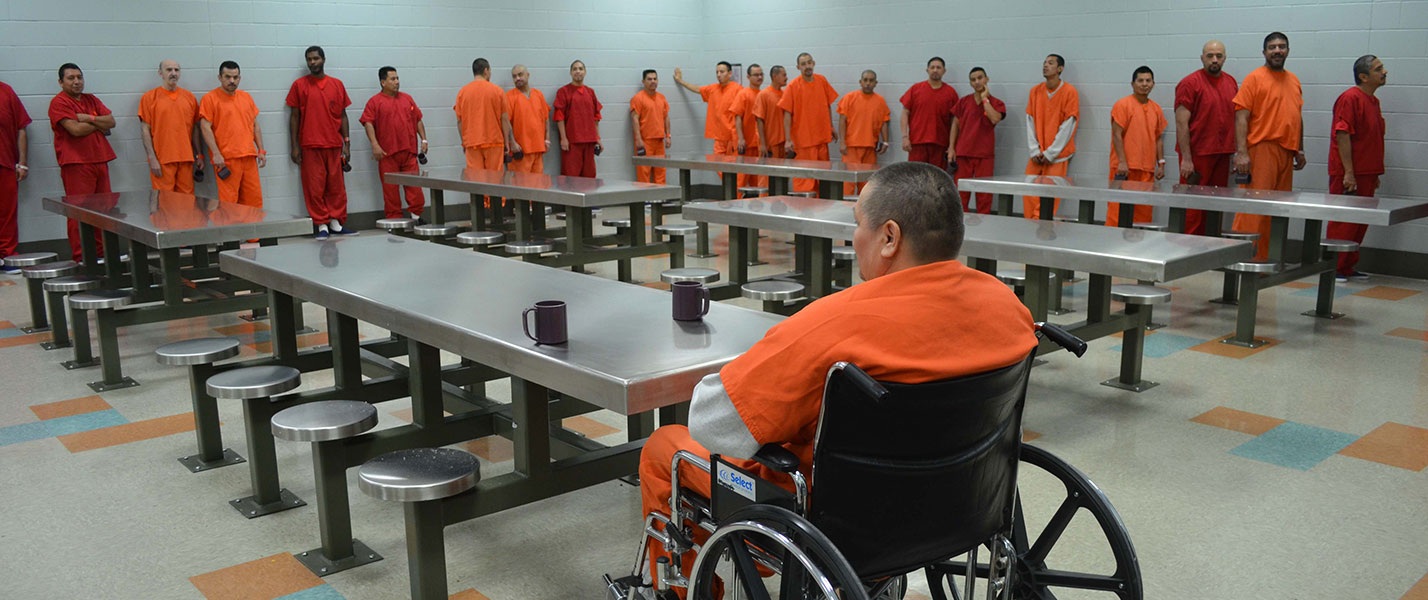Detention oversight is ineffective, putting people’s lives at risk

Despite 2009 immigration detention reforms and the Obama administration’s promises for greater government transparency, a culture of secrecy persists that undermines immigration detention oversight. The combined lack of transparency and accountability allows detention centers to continue operating without any fear of having to answer for the inhumane treatment of people in detention.
Immigration and Customs Enforcement’s (ICE) inspections process is based on the standard adopted by each detention facility. There are four versions of the standards in use: the 2000 National Detention Standards (NDS) revised in 2019, and the 2008 and 2011 Performance-Based National Detention Standards (PBNDS) revised in 2016. None of these standards are legally codified however, meaning there is little recourse if facilities are not meeting standards.
Even the most recent standards do not cover many important aspects that affect the daily lives of detained individuals, including the affordability of phone calls, contact visitation, or the remote location of a facility that could limit access to legal services and community support.
Perhaps most concerning is the absence of consequences for facilities which subject detained people to inhumane and degrading treatment. In 2009, Congress required ICE to stop contracting with any facility that failed two inspections in a row. Rather than leading to closure of the worst facilities, the inspections have become a sham. The inspections are pre-announced, fail to properly include interviews from people detained at the facilities, and fail to identify conditions or abuse at facilities.
Documents received through a Freedom of Information Act request revealed that no facility has been closed as a result of failing two inspections in a row, and recent documents from ICE show very few facilities failing even one inspection. In 2021, Nakamoto Group, the company contracted by ICE to perform its inspections, issued recommendation ratings of “Meets Standards” for the vast majority of its 88 inspections that year. Meanwhile, the Department of Homeland Security’s (DHS) own Office of the Inspector General (OIG) has published multiple reports detailing both the dangerous conditions in ICE facilities as well as the inadequacies of the agency’s inspections process and accountability practices.
When Members of Congress seek to fulfill their oversight responsibilities, ICE is unresponsive and uncooperative - ignoring letters requesting information, denying entry to facilities, and publishing less than the minimum reporting requirements outlined in oversight legislation. The current inspections process is broken and leads to a continuation of detention center abuse and worsening detention conditions. It also allows local contractors to continue profiting off human suffering. After years of demands for better oversight and consequences for abysmal conditions, it is clear that detention cannot be made better. Rather, a phase out of the detention system entirely is the best possible outcome for immigrant communities.
ICE Detention Standards
- 2019 National Detention Standards
- 2011 Performance-Based National Detention Standards with 2016 Revisions
- 2008 Performance-Based National Detention Standards
- 2000 National Detention Standards
Immigrant Detention Inspections
DWN's Immigrant Detention Inspection Series was a project of supporting members and allies in conducting NGO-led inspections of ICE detention centers. These inspections allowed stakeholders to conduct facility walkthroughs and interview people in detention to expose the reality of detention centers.
Department of Homeland Security Office of Inspector General Reports
- ICE’s Inspections and Monitoring of Detention Facilities Do Not Lead to Sustained Compliance or Systemic Improvements (June 2018)
- ICE Does Not Fully Use Contracting Tools to Hold Detention Facility Contractors Accountable for Failing to Meet Performance Standards (January 2019)
Learn More About Detention Oversight
- Information from ICE's ERO's July 2017 Facility List
- Detention Center Inspections (and Contracts)
- Detention Facilities and Their Standards
- Detention Watch Network and National Immigrant Justice Center Report
Lives in Peril: How Ineffective Inspections Make ICE Complicit in Detention Center Abuse - Detention Watch Network and National Immigrant Justice Center Report
ICE Lies: Public Deception, Private Profit - Advocacy and Organizing Toolkit
Using ICE Contracts and Inspections to End Abusive Detention - Flow Chart
ICE Offices Involved in the Inspections Process - Flow Chart
ICE ERO Inspection Process
